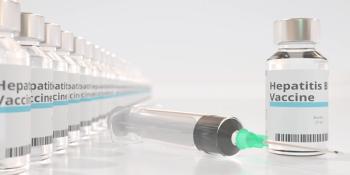
Decoding the biosimilar paradox: Policy reforms, increased transparency and patient education
Key Takeaways
- Biosimilars promise reduced costs and expanded access, yet adoption is hindered by system complexity, financial incentives, and hesitance from providers and patients.
- Patients, providers, payors, and employers benefit from biosimilars through reduced costs and expanded access, but barriers like PBM influence and market strategies persist.
Why lower-cost alternatives struggle to gain ground
Biosimilars have been hailed as a solution to the rising costs of specialty medications. Offering similar clinical effectiveness at lower cost, they promise savings for patients, providers, payers and employers. Paradoxically, despite this potential, adoption remains low due to system complexity, financial incentives, and provider and patient hesitance.
As a leader of a specialty pharmacy services company working with hospitals and health systems to build specialty pharmacies and innovative programs that keep drug costs down for both patients and the health system, I recognize the significant promise biosimilars hold for reducing health care costs and expanding access to lifesaving medications. Health systems and providers would be able to offer cost-effective therapeutic options without compromising efficacy. Health plans and employers would benefit from the low cost of drugs and could use this cost savings from biosimilars to offer better benefits while reducing employee contribution. Yet, misaligned incentives and industry inertia continue to stall progress. To realize the full potential of biosimilars, stakeholders must address these challenges through policy reforms, increased transparency, provider engagement and patient education.
Who stands to benefit?
For patients, biosimilars offer the promise of reduced out-of-pocket costs and expanded access to effective therapies. Studies have shown that biosimilars can be
Physicians and other clinicians benefit from an expanded arsenal of treatment options that enable managing complex diseases more effectively within budget constraints without compromising clinical effectiveness.
Payors and employers also stand to gain from the reduced drug spend associated with biosimilars. For instance, payors from a network of community oncology practices with 107 physicians and 85 advanced practitioners across 16 states saved approximately
Barriers to Adoption
Pharmacy Benefit Managers (PBMs) play a crucial role in determining which drugs are covered by insurance plans. However, some PBMs have entered the biosimilar manufacturing space, creating potential conflicts of interest. For example, CVS Health launched Cordavis, a subsidiary that partners with manufacturers to commercialize biosimilars. This vertical integration raises concerns about formulary decisions that may not prioritize patient benefit.
Moreover, PBMs may exclude certain biosimilars from formularies in favor of their own products, potentially limiting competition and patient access. So far in 2025, the
In addition, patients currently well managed on brand name biologics are often apprehensive about switching to biosimilars due to concerns about efficacy and safety. This apprehension can lead to poor adoption and declining outcomes due to the
Drug manufacturers employ various strategies to maintain market dominance. AbbVie's dual pricing strategy for Humira, offering significant rebates to PBMs while allowing biosimilar market entry, has slowed biosimilar uptake. Despite the availability of multiple adalimumab biosimilars, Humira retained over 80% of the market through mid-2024, and escalating challenges continue to exist in market share in 2025 and beyond.
For physicians, biosimilar adoption is hampered by their familiarity with existing biosimilars, a reimbursement structure that favors a reference product, and the administrative burden of switching to biosimilars.
Policy and market reform momentum
There is growing momentum to address biosimilar barriers, especially PBM influence. A 2024
Increased transparency and patient education
One way to improve biosimilars adoption and sustainability is through patient education on the safety and effectiveness of biosimilars among patients is through involving them in the decision-making process. Patients need to understand the concept of biosimilarity and that their molecular structure is highly similar to the reference product with no meaningful difference in terms of safety and efficacy compared with the reference product. In addition, real world-data/monitoring of treatment outcome after switching to biosimilars is key to long term sustainability of the biosimilar program. This is possible through objective clinical and laboratory assessment of therapy response pre and post biosimilar transitions. When possible, tracking disease specific biomarkers through drug and anti-drug antibody levels offers real world evidence to address patient concerns and minimize the occurrence of the nocebo effect. This type of real-world data can also help to eliminate physician hesitancy in prescribing these new biosimilar medications to patients.
The bottom line
With so many standing to benefit from biosimilar adoption, the time is now to act in decoding the biosimilar paradox. If we’re serious about lowering drug costs and improving access, the focus of reform must shift upstream toward the entities that control access, not those delivering care. PBMs and payors should be required to justify formulary choices, especially when they exclude lower-cost biosimilars in favor of higher-rebate alternatives. True transparency starts at the top of the supply chain, not at the bedside. Rather than imposing new reporting burdens on hospitals and pharmacies, we should be aligning incentives around outcomes. Value-based reimbursement models that prioritize patient results over drug brand selection can give biosimilars a fair chance to compete while freeing physicians and other clinicians to focus on care.
Nicole Faucher, MS, provides day-to-day leadership for
Newsletter
Stay informed and empowered with Medical Economics enewsletter, delivering expert insights, financial strategies, practice management tips and technology trends — tailored for today’s physicians.








